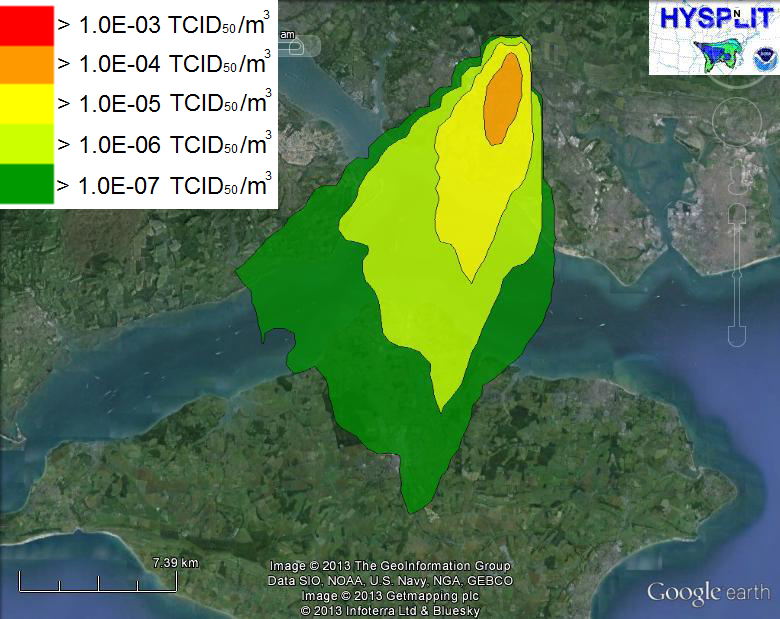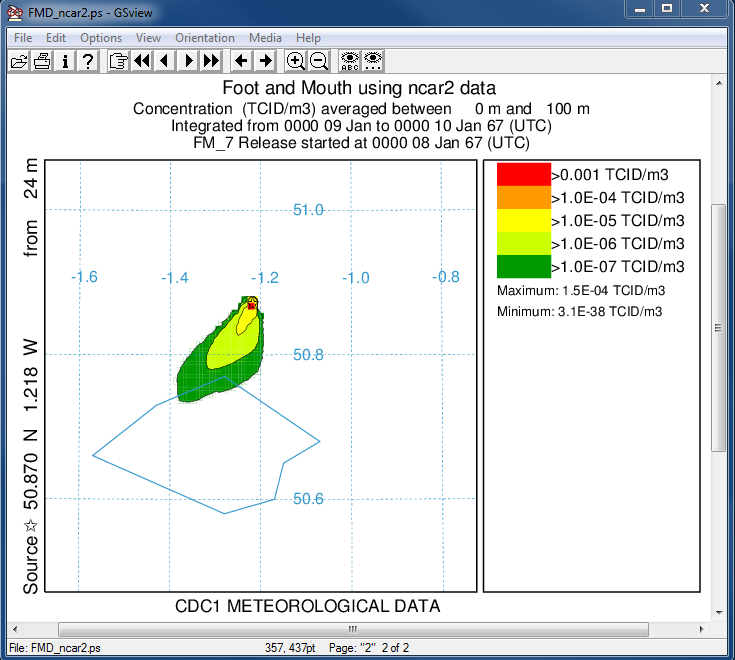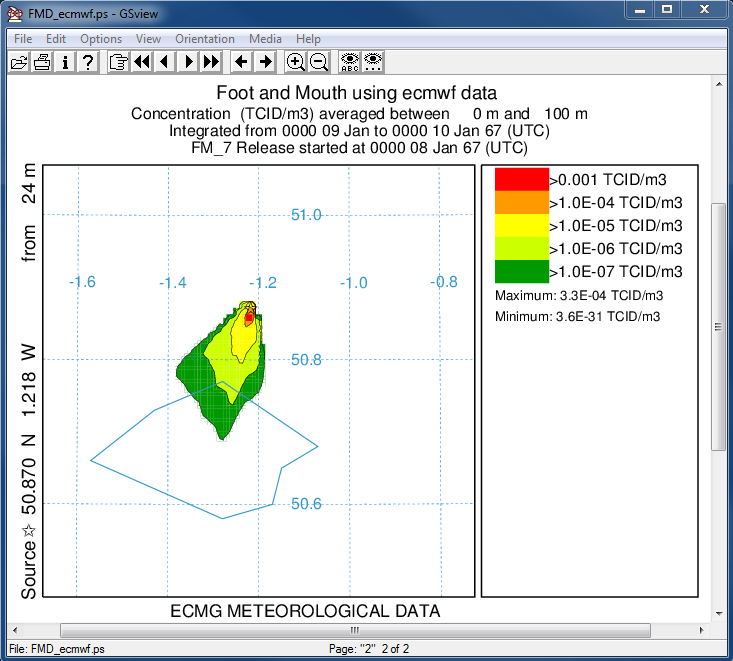2.7 Dispersion of Foot and Mouth (10 min) |
||||
 Previous |
 Next |
|||
A HYSPLIT module for the spread of the foot and mouth disease virus was first developed by Garner, Hess, and Yang (2006) and subsequently modified by Lambkin et al. (2013) and Lambkin et al. (2019). Given a virus emission rate to the atmosphere, in addition to normal atmospheric dispersion processes, the model depletes the virus airborne concentration due to changes in humidity and temperature, to predict its airborne spread.
- Using the 1967 Hampshire, UK, outbreak of FMD as a case study, see Gloster et al. (2010) for details, the figure below, taken from the Met Eireann report, illustrates the 24 h time averaged concentrations for the test day of the 9th of January 1967 using 1-degree ECMWF reanalysis data:

- This simulation can be reproduced using public meteorological data sources; either the 2.5 degree NCAR/NCEP reanalysis data or the 1.0 degree ERA-40 reanalysis from ECMWF. Data samples for this case are provided in the ../files directory. The model configuration is relatively uncomplicated. The following settings are used for the sample calculation shown above:
3.333E+4 TCID units per hour FM_7 Species sets defaults (see fm_parm.txt) ...particle aging = 120 minutes ...temperature threshold = 24 deg C ...humidity threshold = 60% 24 daily averages output 1.0 1.0 1.0 define a particle 0.01 0.0 0.0 0.0 0.0 with dry deposition 1 cm/s 0.0 8.0E-05 8.0E-05 wet scavenging defaults -x24.0 concplot units conversion for exposure - The results are shown below for the second day using the NCAR data on the left and the ECMWF data on the right. The ECMWF results are identical to the Met Éireann report results shown above. Graphics compatible for display in Google Earth can be obtained by using the -a3 command line option.
2.5 deg NCAR/NCEP 1.0 deg ERA-40 

The FMD example shown here is primarily intended as an example to illustrate the calculation procedure using existing meteorological data sources. Actual simulations should use higher resolution meteorological data if possible.

